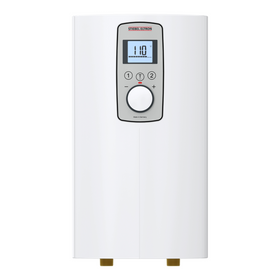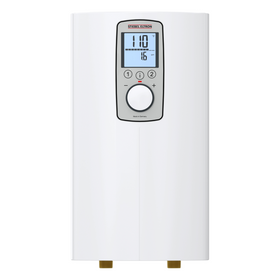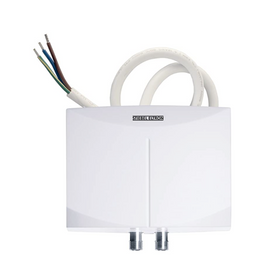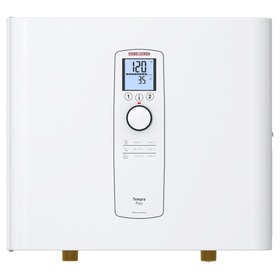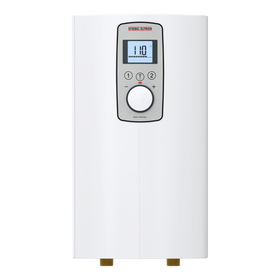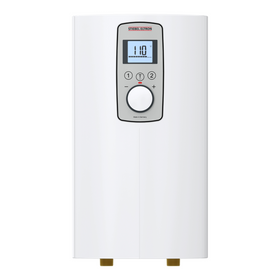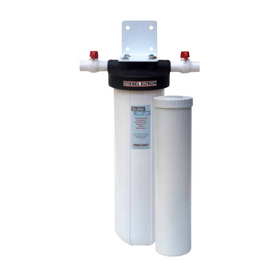
Solar Water Heaters: Another Way to Use the Sun’s Energy
Last Updated: Apr 13, 2025A solar water heater converts energy from the sun to heat water for showers, washing, and even home heating. Energy Star models use up to 60% less energy than non-Energy Star models to further reduce your carbon footprint.
The US Energy Information Administration (EIA) estimates that in 2019, around 174 billion kilowatt-hours (kWh) of electricity were used by US households for water heating purposes. For areas where coal-powered power is the norm, each kWh releases around 2 pounds of CO2 to the environment. Over time, most jurisdictions are gradually moving away from coal electricity production. But, the CO2 from water heating at home leads to millions of metric ton equivalents of CO2 being released into the atmosphere each year from both electricity and natural gas-powered water heaters.
Unless we produce electricity at home with renewable energy sources, the warm water that we enjoy in our showers and sinks comes with a significant carbon footprint.
The good news is that most homes can effectively heat water for household use using nothing more than the sun that shines on their roof. Carbon zero homes that produce renewable energy would also benefit from solar water heaters. These would free up energy from solar panels and wind turbines to be used for other energy purposes.
Below, we look at the benefits and feasibility of solar water heaters and offer a complete review of the different types of solar water heaters on the market today.
Table of Contents
- How Does a Solar Water Heater Work?
- What Is the Cost of a Solar Water Heater?
- Solar Water Heater Savings
- The Best Solar Water Heaters on the Market
- Bottom Line

How Does a Solar Water Heater Work?
Solar water heaters can be either "active" or "passive."
Passive Solar Water Heaters
Passive systems are pressurized and do not require a pump, but rely on the water pressure from your well or municipal water source. According to the US Department of Energy, these systems are less expensive than active options. They are typically quite durable, but they are not as efficient.
Active Solar Water Heaters
There are two main types of active solar water heating systems: direct and indirect. Direct circulation systems rely on pumps that circulate household water through the solar collector. These systems are typically placed on the roof or wherever direct sunlight is available before being pumped into the home. Indirect circulation systems utilize pumps to circulate a heat-transfer fluid that does not freeze through the collectors and a heat exchanger. The latter is generally preferred in areas with long and cold winters.
Photovoltaic (PV) panels turn the energy from the sun into electricity. In contrast, both of these types of solar water heaters use the sun's energy to heat water that your home uses, and incorporate the following elements:
Collector
The collector is a large, usually black panel that sits on your roof in direct sunlight. In the simplest case, flat-plate collectors are nothing more than water pipes, preferably copper. They are coiled through insulated metal boxes with black glass that trap the heat emanating from the sun. With this setup, the collector is essentially a super-efficient greenhouse that transfers the sun's heat to the water circulating through the piping. More sophisticated systems can rely on evacuated tube collectors that work like vacuum flasks. These collectors are generally more expensive. However, because they limit the amount of heat escaping from the collector, they might be recommended in areas with colder temperatures.
Hot Water Tank
Once the collector heats the water, it is subsequently stored in an insulated hot water tank. Fortunately, most solar water heaters can use existing hot water tanks. However, you will often need to find space in your mechanical room for an additional water tank.
Pump
Active solar water heaters need a small pump to move the water through the piping, to the collector, back to the hot water tank, then to your household faucets and showerheads. To further reduce energy usage, you could consider using a solar pump station circulator, such as those offered by Solar Panels Plus.
What Is the Cost of a Solar Water Heater?
Solar water heaters have a wide cost range—typically between $3,000-$10,000—as it depends on the system size, types of collectors, and complexity of installation. It's best to get more than one bid from a local installer. Solar water heaters might qualify for renewable energy tax incentives and rebates as well.
Solar Water Heater Savings
On the benefit side, the savings on your electricity bill will allow you to pay off the initial costs of purchase and installation within 10 to 15 years (or sooner, with rebates). A properly maintained solar water heating system can last for at least 25 years.
Solar water heaters will immediately reduce the carbon footprint of your home while also dropping your monthly electricity bill. In areas with warmer climates, solar water heaters can heat 100% of the water your household uses. Even in colder climates, evacuated tube systems with efficient heat exchangers can still heat upwards of 50% of your water, even during the coldest (and darkest) days of winter.
The Best Solar Water Heaters on the Market
Solar water heaters are becoming increasingly efficient at heating the water for your household use. The best product for you will depend on where you live. Any of the following solar water heaters make for a smart investment that will reduce your carbon footprint while simultaneously decreasing your monthly energy bills.

Rheem Solar Water Heater
Rheem offers several different sized solar water heaters. Their SolPak with Electric Backup ensures that your home will always have hot water available and is ENERGY STAR® certified. The double-wall heat exchanger features a copper tubing wrap-around design that is heated by a flat plate collector system, with black paint absorber coating for maximum heat gain.

Sunbank Solar Water Heater
The Sunbank Solar Water Heaters are currently priced at between $2,500 and $4,000, depending on whether you want a 40-Gallon or 80-Gallon option. This evacuated tube passive solar water heater is an affordable, easy to install option, and they qualify for US Federal Tax Credits.

Duda Solar Water Heaters
Duda Solar Water Heaters manufactures several sizes of solar water heating products. Their 400-liter system includes 40 solar tubes inside an evacuator tube collector system and a 105-gallon tank. The active solar heater works well during the winter and includes all the necessary parts for complete setup and installation. These systems also qualify for US Federal Tax Credits.
For the ambitious do-it-yourselfer, you could make your own solar water heater by following the instructions laid out in this DIY project offered by Build It Solar.

An Alternative: The Jean Pain Compost Water Heater
Solar water heaters need several hours of direct sunlight to function optimally. For people who live in shady areas or don't have the financial stability to invest in a solar water heater, the Jean Pain compost water heater is an alternative DIY option.
Also known as a compost water heater, this smart and resourceful method utilizes naturally created heat from the decomposition process of compost piles. In a properly formed compost pile, the heat generated by microorganisms that break down the organic material into nutrient-rich humus can routinely reach constant temperatures between 120 and 170 degrees Fahrenheit. A compost water heater coils copper water tubing through a compost pile located near the home. It then pumps household water through that pile and into the hot water tank. Larger compost piles made from wood chips will decompose more slowly and will work for up to a year before needing to be reconstructed.
Whereas conventional electric water heating creates carbon dioxide emissions, the only byproduct of the Jean Paine method is compost that can be spread over the garden.
Bottom Line
Many people think "going solar" only means turning the sun's rays into electricity. Fortunately, collecting and storing the sun's heat is an extremely efficient technology that can dramatically reduce utility bills. Maybe it's right for you!
Tobias Roberts
Tobias runs an agroecology farm and a natural building collective in the mountains of El Salvador. He specializes in earthen construction methods and uses permaculture design methods to integrate structures into the sustainability of the landscape.





